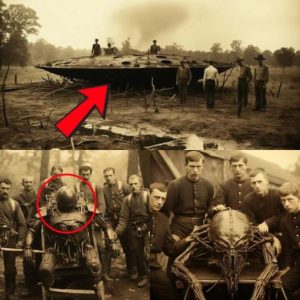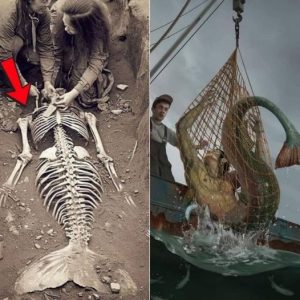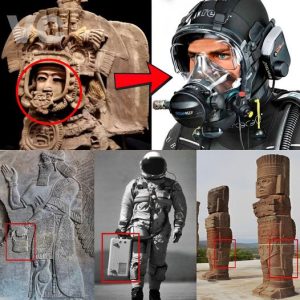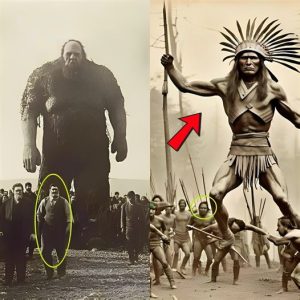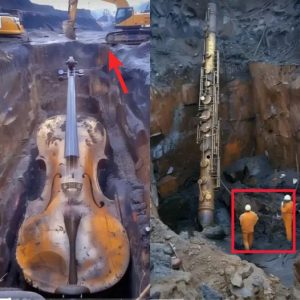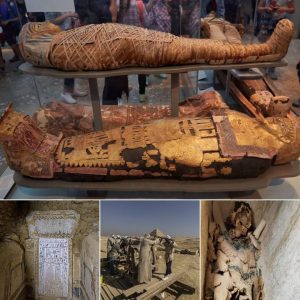The discovery of European-type bodies hundreds of kilometers away gives evidence of a hitherto undiscovered relationship between East and West in the Bronze Age. The man whose mummified remains were discovered has reddish brown hair with gray flecks, high cheekbones, a long nose, large lips and a red beard.

3,000 years ago it was about 2 meters high. He was buried wearing a crimson double-breasted tunic and striped trousers. He looks like a European from the Bronze Age. In fact, he has all the characteristics of a Celt, as proven by his DNA. However, this is not an ancient native of central Scotland. That is the man with the mummified body of Cherchen, found in the lonely areas of the Taklamakan Desert. It is currently in a museum in Urumqi, the provincial capital. In the language of the Uyghurs of Xinjiang, Taklamakan means “one enters not to leave.”

What is surprising is that the Cherchen man, along with the mummies of three women and a child, was discovered in a burial site hundreds of kilometers from the main Celtic settlements in France and the United Kingdom.
Like hundreds of other mummies from the Tarim Basin in Xinjiang, it is native to Europe, according to genetic studies. No one knows how he got there, why he was there, or how long he and his family were there.

But, as the desert’s name suggests, it never left. One of the women who shares his grave has light brown hair that appears to have been brushed and braided yesterday, for his funeral. Her face is adorned with painted symbols and her magnificent red funeral dress has lost none of its luster during the three millennia during which this tall, fine-featured woman has rested beneath the sands of the Silk Road.


The bodies are much better preserved than Egyptian mummies, and there is something moving about the sight of the babies. The 𝚋𝚊𝚋𝚢 was wrapped in rich brown cloth tied with red and blue cords, and a blue stone was placed over each eye. Next to him was a 𝚋𝚊𝚋𝚢 bottle with a nipple made from a sheep’s udder.
From the mummy, the museum has reconstructed the appearance of the Cherchen man and his way of life. The similarities to the traditional Bronze Age Celts are striking. The analyzes also showed that the weave of the fabrics was comparable to the clothing worn by salt miners living in Austria in 1300 BC J.-C.
In 300 BC, Celtic influence spread from Ireland to southern Spain in the west, to the Po River, Poland, Ukraine, and the central plain of Turkey in the east. However, these mummies seem to indicate that the Celts had entered Central Asia, reaching the Tibetan steppes. Between 500 and 100 BC. C., the Celts finally settled in Brittany (today Great Britain). We cannot precisely speak of an organized invasion, since they occurred in several periods and are believed to be a group of loosely connected people who share the same language, religion and culture. The Cherchens appear to have been a peaceful people, as their graves contained few weapons and there were few signs of class. The Beauty of Loulan is much older than the Cherchen discoveries, dating back 4,000 years. She is one of the many mummies unearthed in the village of Loulan and had long blonde hair. One was the mummy of an eight-year-old boy wrapped in a wool robe with bone utensils. Scandinavian beauty features characterize Loulan. She died at the age of 45 and was buried with a basket containing wheat, combs and a feather to sustain her in the afterlife.
Over the last quarter of a century, hundreds of dehydrated bodies have been discovered in the Taklamakan Desert. The finds discovered in the Tarim Basin are among the most important of the last quarter of a century. “Circa 1800 BC, the first mummies from the Tarim Basin are completely Caucasoid,” says Professor Victor Mair of the University of Pennsylvania, who has been attracted to these mummies since he discovered them, practically forgotten, in the rear camera. of the old museum in 1988. He has stopped at nothing, not even the darkest political entanglements, to discover more and more about these extraordinary individuals. He maintains that immigrants from East Asia arrived in the eastern parts of the Tarim Basin about three thousand years ago.

In China it is traditionally said that, two centuries before the birth of Christ, Emperor Wu Di sent an emissary to the West in order to establish an alliance against the Huns, then settled in Mongolia.

The route that Zhang Qian, the ambassador, took through Asia later became the Silk Road. Centuries later, Marco Polo took the opposite path and began the opening of China. The very idea that white people could have settled in an area of China thousands of years before Wu Di’s first contacts with the West and the voyages of Marco Polo has far-reaching political consequences. As for the fact that these Europeans would have lived in the restive province of Xinjiang hundreds of years before East Asians, it is an explosive hypothesis.
Ji Xianlin, a Chinese historian, in his preface to archaeologist Wang Binhua’s book The Ancient Tombs of “However, in China itself, a small group of ethnic separatists have taken this opportunity to stir up trouble and are behaving like buffoons. Some present themselves as descendants of these former “whites” and have no other objective than to divide the country. But these evil acts are doomed to failure.”
It is therefore not surprising that the government has been slow to report these important historical findings, for fear of stirring up separatist currents in Xinjiang. The Beauty of Loulan is thus claimed by the Uyghurs, who have made her their emblematic figure, celebrated with songs and portraits.
Although now genetic tests show that he was actually European. In total, there are 400 mummies in different states of desiccation and decomposition. Added to this are thousands of skulls. There is something about mummies that keeps scientists busy for a long time.
